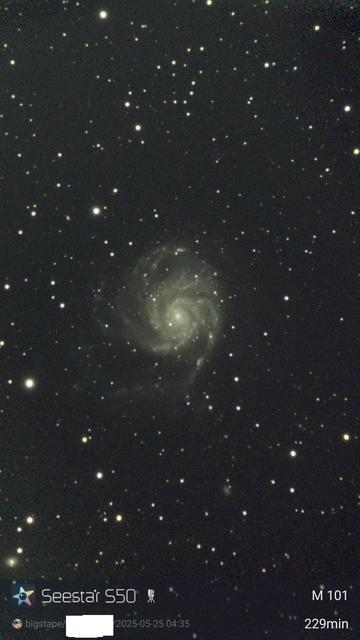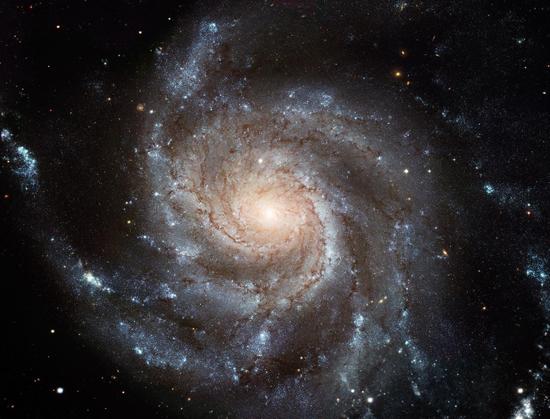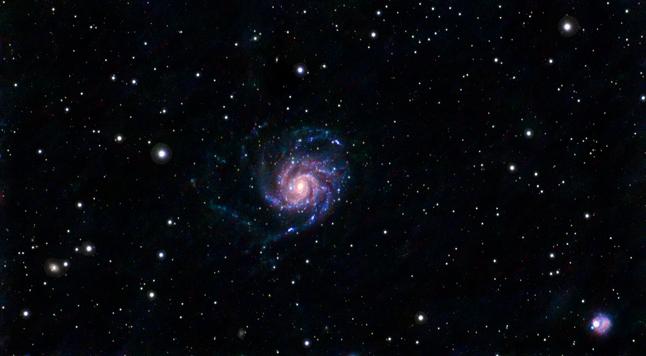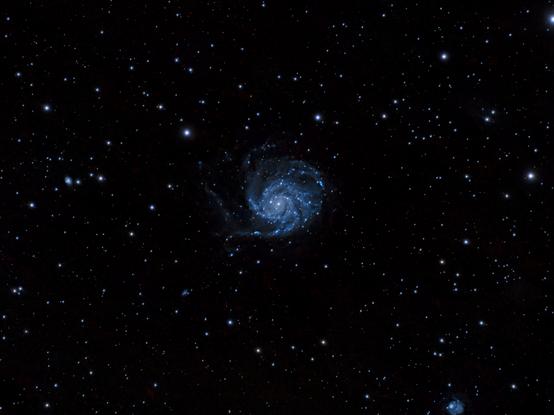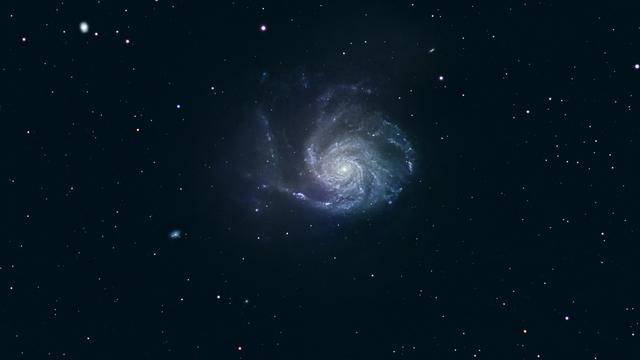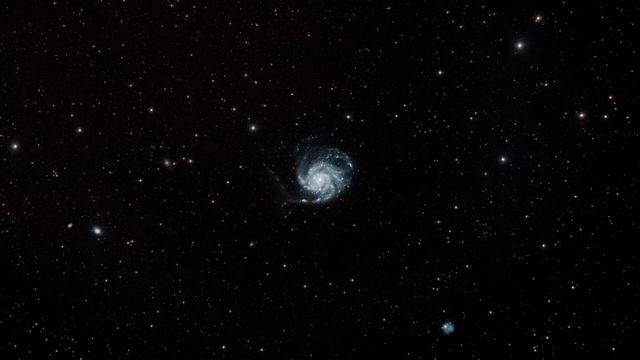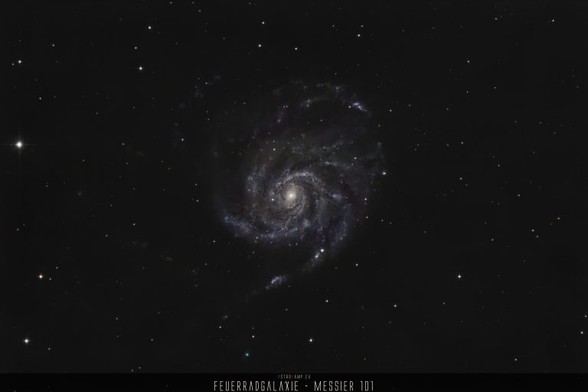First serious effort with the Seestar S50. 229 minutes of data in 19.72 SQM skies. Even caught 14th magnitude background galaxy NGC 5477. No post processing by me, it's all the Seestar. #astronony #astrophotography #seestar #M101
#M101
PlayerOne Uranus-C - Sky-Watcher Evostar 72ED
Sky-Watcher Star Adventurer 2i
Stacked and processed with #siril
First try with a new camera, still learning on how to set the different parameters while shooting. Repeating M101 since was the last target with the DSLR camera.
Sony A68 - Sky-Watcher Evostar 72ED
Sky-Watcher Star Adventurer 2i
Stacked and processed with #siril
Stack from two different nights, ~6 hours of total integration with 120s subs
M101 - The Pinwheel Galaxy.
ZWO Seestar S50.
250mm, f5, 1080 exposures of 10’’.
#telescope #telescopes #zwo #zwoasi #zwoseestar #zwoseestars50 #seestar #seestars50 #astro #astrophoto #astrophotos #astrophotography #astrophotographer #spacephotography #astronomy #spaceexploration #nasa #universe #space #deepsky #deepspace #galaxy #galaxies #pinwheel #pinwheelgalaxy #m101 #messier101 #messier
ZWO Seestar S50.
250mm, f5, 1080 exposures of 10’’.
#telescope #telescopes #zwo #zwoasi #zwoseestar #zwoseestars50 #seestar #seestars50 #astro #astrophoto #astrophotos #astrophotography #astrophotographer #spacephotography #astronomy #spaceexploration #nasa #universe #space #deepsky #deepspace #galaxy #galaxies #pinwheel #pinwheelgalaxy #m101 #messier101 #messier
Sony A68 - Sky-Watcher Evostar 72ED
Sky-Watcher Star Adventurer 2i
Stacked and processed with #siril
82x91s subs
Best #galaxy observation for this morning. #M101 - #PinwheelGalaxy. #unistellar #odysseypro #space #astronomy #amateur
Due to rain showers in our area, on had time for 1 observation this morning. #M101 - #pinwheel #galaxy #unistellar #odysseypro #space #astronomy #amateur
Pinwheel Galaxy (M101) - May 8 2024 🪐
#astrophotography #curiosity #m101 #mars #mastcam #msl #pinwheelgalaxy #rover
⏩ 3 new pictures from @kevinmgill https://commons.wikimedia.org/wiki/Special:ListFiles?limit=3&user=OptimusPrimeBot&ilshowall=1&offset=20240510110119
Astrophoto: Pinwheel Galaxy – Messier 101 – 06/23 https://astrocamp.eu/en/astrophoto-pinwheel-galaxy-messier-101-06-23/ My 2023 photo of the 21.000.000 LJ away Pinwheel Galaxy. Significantly sharper structures and rounder stars. These are the improvements of the new workflow. … #M101 #Messier101 #PinwheelGalaxy #SN2023ixf #clearskies
Astrofoto: Feuerradgalaxie – Messier 101 – 06/23
Mein 2023 Foto der 21.000.000 LJ entfernten Feuerradgalaxie. Deutlich schärfere Strukturen und rundere Sterne. Dies sind die Verbesserungen des neuen Workflows.
https://astrocamp.eu/astrofoto-feuerradgalaxie-messier-101-06-23/
#Astrofotografie #Galaxie #Supernova #Feuerradgalaxie #M101 #Messier101 #SN2023ixf
Hémoglobine de ver marin : c'est beau l'optimisme ! https://www.cyclisme-dopage.com/dossierdefond/2024-01-02-cyclisme-dopage-com.htm #cyclisme #dopage #M101 #Arenicola
The Pinwheel Galaxy M101
Located 25 million light-years away from Earth in the constellation Ursa Major.
This is a stack image containing over 360 individual photos.
This image has been extremely cropped.
#photo #photography #NightSky #space #M101 #PinwheelGalaxy #galaxy #stacked #Canon70D
50 pauses de 300 secondes
#astronomy #astronomie #astrophotography #astrophotographie #astrodon #messier #messiers #messier101
Después de muchos días para las capturas y muchos días de procesado.. por fin parezco convencido con la galaxia #M101 (Pinwheel Galaxy)
#Astrofotografía #Astrophotography #cielosesa
Datos de adquisición 👇
Took ~2.5 hours of grayscale exposure on the Pinwheel Galaxy (Messier 101) as a test dataset as I evaluate PixInsight. Might try for some color tonight if the weather permits. Second image highlights the location of the lingering supernova.
#M101 #PinwheelGalaxy #galaxy #space #science
Check out the most recent post on my blog. all about capturing Supernova 2023ixf in M101. #astronomy #space #astrophotoraphy #Supernova #2023ixf #M101 #thepinwheelgalaxy https://astronomy716.blogspot.com/2023/06/chasin-sn-2023ixf-in-m-101.html
Here is some data on the change in brightness of a few past supernovae.
Luminosity of a Type II SN rises for 1-3 weeks and then declines over months.
Type II-L SNe have a steady decline rate, while Type II-P supernova exhibit an intermediate plateau period with a reduced decline rate.
The average decay rate of 0.008 mag per day is much lower than that of Type Ia SNe.
https://arxiv.org/abs/0904.0119
https://en.wikipedia.org/wiki/Type_II_supernova
#SN2023ixf #Supernova #M101
2/n
18 days after it exploded on May 19, supernova SN2023ixf in the Pinwheel Galaxy M101 seems to be dimming a bit, as all Type II SNe do, gradually over a period of several months.
Note that an increase in magnitude by 1 implies a decrease in luminosity by a factor of 2.512.
Pre-explosion mag was ~24.
See this thread https://fosstodon.org/@AkaSci/110402301121258093 for more info on SN2023ixf.
Image: https://www.virtualtelescope.eu/2023/06/07/supernova-sn-2023ixf-in-the-messier-101-spiral-galaxy-a-image-6-june-2023/ (reported mag = 10.9 on Jun 6!)
Graph: https://www.aavso.org/LCGv2/index.htm?DateFormat=Calendar&RequestedBands=&view=api.delim&ident=SN%202023ixf&delimiter=@@@
#SN2023ixf #Supernova #M101
1/n
